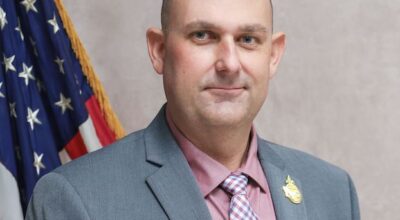Wooden treasures carved, painted
Published 12:00 am Monday, October 19, 1998
By DEBORAH CORRAO / L’Observateur / October 19, 1998
Almost 50 years ago Neil Boudreaux painted a feather as his first watercolor project in a seventh-grade art class at Destrehan High School.
His teacher was very impressed with his work.
Now, at 60, Boudreaux is impressing others with his art. The feathers hepaints now are the colorful and intricate patterns on the wings of the duck decoys he carves.
Boudreaux began carving the elaborate wooden decoys about 15 years ago.
It’s something he said he just had to do.
“You have to really want to do it,” Boudreaux said. “You have to havepatience. Lots of people start out carving but never even finish their firstproject. They give up.”As a matter of fact, Boudreaux hasn’t finished his first project, a drake redhead whose back feathers are not yet painted. He said he’s gottensidetracked by other projects he’s started.
“I’m going to finish it,” Boudreaux said, showing the place where he left off. “I keep it to look back on. You learn from the mistakes you make.”Boudreaux said for the most part he is self-taught – learning by trial and error. Once in a while he gets help from a book or by watching othercarvers. Mostly he just watches his subjects.He keeps a keen eye on wildlife during hunting and fishing trips, photographing birds in their native habitats. He keeps pictures he runsacross in magazines and calendars, hoping one day to recreate the magic of a lone mallard preening itself or a flock of ducks in flight.
He also has a permit from the Louisiana Department of Wildlife and Fisheries to keep a few wild ducks in the backyard of his Norco home. Hespends hours observing the birds and taking pictures to get a feel for how he wants to carve a particular waterfowl.
“First I have to have a picture in my mind of what I want to carve,” Boudreaux said. “Then I pencil in the design on my wood and start carvingout the basic shape.”The wood he uses is from the Tupelo gum tree which is plentiful in Louisiana swamps. Boudreaux said the best wood comes from the bottom 4feet of the trunk near the waterline.
Once he has penciled out a rough drawing of his subject on a block of Tupelo, he cuts out the form with a bandsaw.
As he refines his work, he uses calipers to measure the exact width of a duck’s bill from a plaster cast he’s bought from a catalog or a bird he has kept in a freezer after a hunting trip.
The tools he uses become smaller and more precise. He must wearmagnifying goggles once he begins carving the detailed curves of the feather splits with X-acto knives and chisels.
After penciling in the plumage, he begins the painstaking process of carving the tiny, sinuous lines, or vermiculation, that make up the pattern of the bird’s plumage. Some carvers use paintbrushes for this step;Boudreaux prefers woodburning equipment to etch the pattern.
When he’s satisfied with the carving he begins painting, also using live subjects or frozen birds from his freezer to get just the right colors, the shimmering blues, greens and rusts of a mallard or a teal.
Besides ducks, Boudreaux carves and paints hummingbirds, songbirds and turtles, and he has even begun working on a swamp scene that includes miniature cypress trees and a tiny fisherman paddling his pirogue through a bayou.
Boudreaux pulls out a crab he has carved, modeled after one he’s kept in his freezer since catching it nine years ago.
He used tracing paper to lay over the frozen crab to outline the design of the crab’s shell and claws to get a pattern for the one he has carved.
“You have to start out with a crab you’ve just caught,” he said. “The colorschange as soon as the crab dies.”Although he’s never entered competition, Boudreaux attends a show in New Orleans every year to talk with other carvers and catch up on the latest techniques.
When he retires, Boudreaux said, he’d like to spend a lot more time carving. Right now, he says, he pursues his art for relaxation and torelieve stress.
“If my wife and I start arguing I go out back to my workshop, turn on music and begin carving. My mind is off everything else,” Boudreaux said. “After a few hours I’m feeling better and I can go back inside.”Betty, his wife of 38 years, points to the lighted display case in their living room where Boudreaux’s decoys are displayed.
“This is the cabinet he gave me last Christmas last year,” she said, laughing. “I put a few little things in it, but Neil didn’t seem to like themtoo much. I just took them out and now he uses it for his decoys.”He’s gotten a few offers from people who would like to buy his decoys, but so far he’s not sold one. He said he can’t seem to part with them once hehas put in so much work.
It takes him about 120 hours to complete a decoy, precious hours stolen after the 12-hour workdays he puts in at ADM in Destrehan, where he’s worked for the past 33 years, and the time he spends on the weekends with his wife, five children and seven grandchildren.
“People ask why a good decoy would cost so much,” Boudreaux said. “Theythink it’s just a piece of wood. That’s like saying the Mona Lisa is just apiece of canvas. You’re not buying canvas, you’re buying art.”
Back to Top
Back to Leisure Headlines
Copyright © 1998, Wick Communications, Inc.
Internet services provided by NeoSoft.
Best viewed with 3.0 or higher




